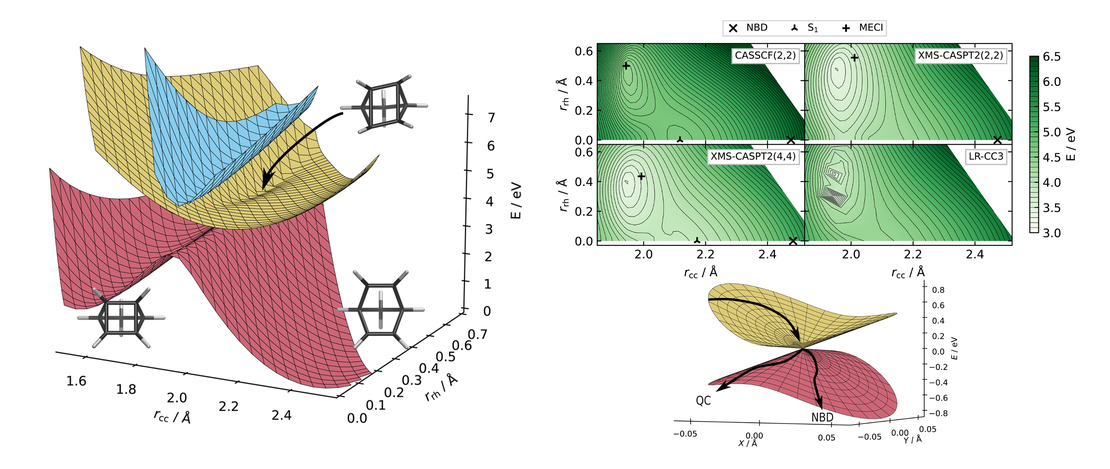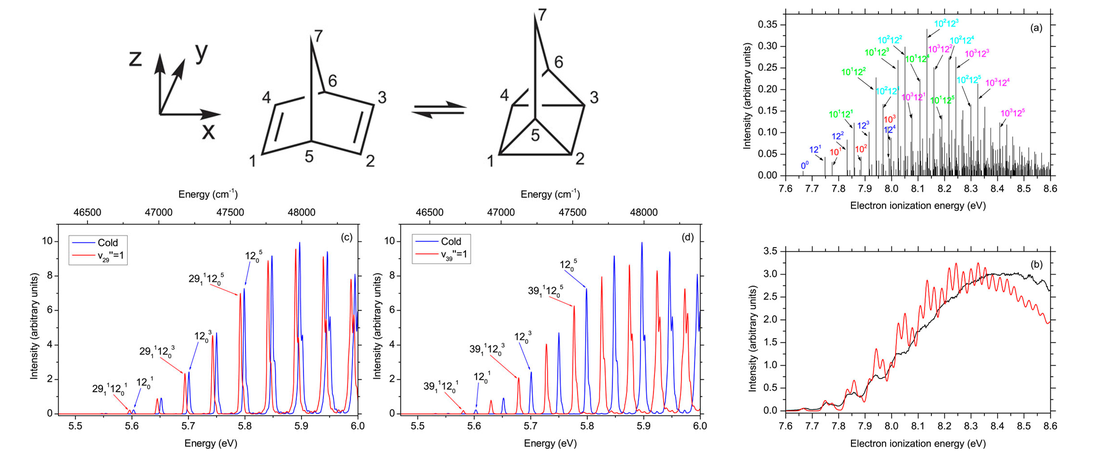
Electronic structure of norbornadiene and quadricyclane
- Joseph C Cooper and Adam Kirrander
- Publication
- January 7, 2025
Abstract:
The ground and excited state electronic structure of the molecular photoswitches quadricyclane and norbornadiene is examined qualitatively and quantitatively. A new custom basis set is introduced, optimised for efficient yet accurate calculations. A number of advanced multi-configurational and multi-reference electronic structure methods are evaluated, identifying those sufficiently accurate and efficient to be used in on-the-fly simulations of photoexcited dynamics. The key valence states participating in the isomerisation reaction are investigated, specifically mapping the important S1/S0 conical intersection that governs the non-radiative decay of the excited system. The powerful yet simple three-state valence model introduced here provides a suitable base for future computational exploration of the photodynamics of the substituted molecules suitable for e.g. energy-storage applications.
Additional Resources
DOI:
Quick Ref:
Phys. Chem. Chem. Phys., 2025, 27, 6, 3089
